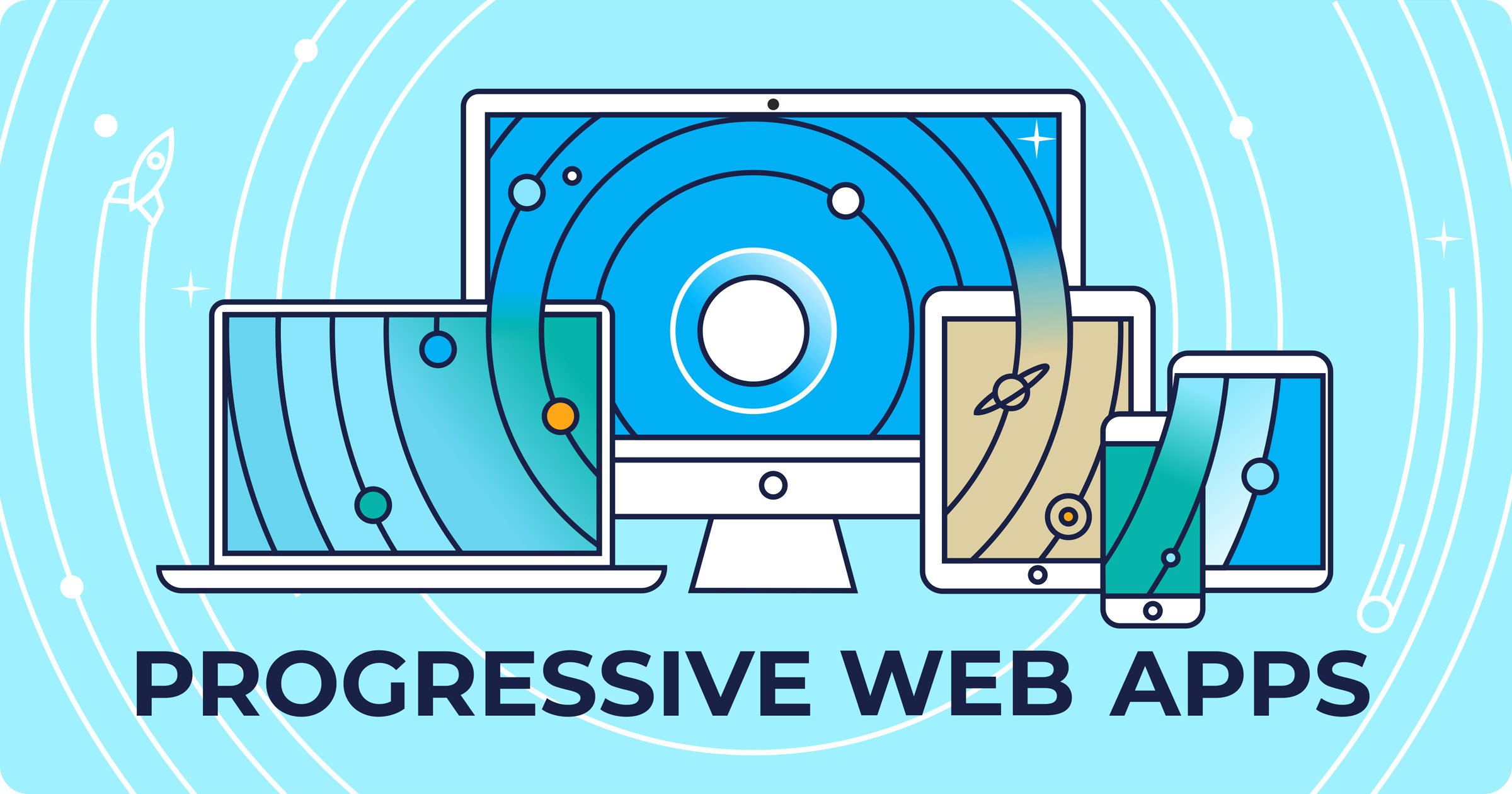Progressive Web Apps (PWAs) have changed how businesses interact with customers online. A Progressive Web App combines the best features of websites and mobile apps, offering speed, offline access, and easy usability. Many companies now see PWAs as a smart way to reach users without asking them to download heavy apps. For digital marketing, this means more opportunities to engage customers, collect insights, and deliver smooth online experiences. Customers expect quick loading times and easy navigation, and PWAs help businesses meet those expectations. They work across devices and don’t require app store approval, which makes them flexible for marketers. This article explores how PWAs affect digital marketing strategies, why businesses are adopting them, and what challenges still exist. By the end, you’ll understand how PWAs shape the future of digital marketing and how they fit into a larger online strategy.
Table of Contents
Better Reach with Cross-Platform Access
One of the strongest impacts of PWAs on marketing is their reach. A website can be opened by anyone with a browser, and PWAs take that further by adding app-like features. Customers don’t need to choose between downloading an app or using a website. They get both in one. For marketers, this means campaigns can reach users across desktops, tablets, and phones without extra development costs.
PWAs also help in regions with limited internet access. Since they can work offline or in poor network conditions, users stay connected to a brand’s content even if they lose connection. This is valuable for digital marketers targeting global audiences. Instead of worrying about whether someone has access to an app store, the focus shifts to keeping users engaged wherever they are.
Cross-platform availability also simplifies tracking customer journeys. Marketers can study how users move from discovery to conversion without worrying about device differences. It creates a more consistent view of customer behavior.
Faster Loading Times Improve Engagement
Slow websites often push users away. Research shows that even a few seconds of delay can reduce conversions. PWAs are built to load quickly, often faster than traditional websites. This matters in digital marketing because speed affects how long users stay and whether they take action.
When a page loads fast, visitors are more likely to continue exploring products, services, or content. PWAs use caching and service workers to store data locally, so pages can load instantly even without a strong internet connection. For marketers, this increases the chances that users see key messages, calls to action, or product details before leaving.
Better speed also improves SEO rankings. Search engines favor sites that deliver a smooth experience. PWAs give marketers an edge by combining fast loading with mobile optimization, which is a ranking factor. This makes it easier to gain visibility without extra spending on ads.
Push Notifications and Direct Communication
PWAs allow businesses to send push notifications directly to users. This tool has a major role in digital marketing. Notifications can remind users about abandoned carts, special offers, or new content. Unlike emails, they appear on the user’s device instantly, which grabs attention.
Marketers use notifications to build customer relationships without depending on third-party channels. It creates a direct line between the brand and the audience. But this needs balance. Too many notifications can annoy users and cause them to mute or ignore messages. A thoughtful strategy is required to send reminders at the right time, based on user behavior.
For marketers, push notifications through PWAs cost less than SMS campaigns or app notifications because they don’t rely on app store ecosystems. They make re-engagement easier and more affordable.
Cost Efficiency in Marketing Budgets
Building separate apps for iOS and Android can be expensive. Maintaining them requires updates, bug fixes, and compliance with app store rules. For digital marketers, this often means splitting budgets between website management and app development. PWAs solve this problem.
With a single PWA, businesses cover all platforms. This reduces costs and frees marketing budgets for other areas, like content creation or paid campaigns. Lower costs also make PWAs attractive for small businesses that want app-like experiences without investing heavily.
Cost efficiency doesn’t just help development. It also improves campaign testing. Marketers can try new landing pages, product showcases, or interactive features without waiting for app store approvals. This flexibility makes digital strategies more responsive to market changes.
Improved SEO and Discoverability
Unlike traditional mobile apps, PWAs can be indexed by search engines. This means users can find them through regular search results. For digital marketers, this is a key advantage. Instead of relying only on app stores or ads, they can increase organic reach through SEO.
A PWA shares the same URL structure as a website. This helps marketers use common SEO practices like keyword optimization, meta tags, and structured data. Because PWAs load fast and are mobile-friendly, they already align with what search engines value.
Better discoverability leads to more natural traffic. It also gives marketers flexibility in running content-driven campaigns that support both branding and conversion goals. PWAs allow businesses to merge app-like experiences with web visibility, which boosts their digital presence.
Enhanced User Experience Builds Trust
User experience is central to any marketing strategy. A smooth experience encourages people to return. PWAs focus on performance, responsiveness, and simplicity, which directly improves how users feel about a brand.
For example, PWAs don’t require long downloads or frequent updates. A user simply visits a link and gets a complete app-like interface. This removes barriers, making it easier for marketers to convert new users. A good experience also increases word-of-mouth recommendations, which remain powerful in digital marketing.
Trust grows when users know they can rely on a platform to work anytime. Features like offline mode and instant loading make PWAs reliable tools for building that trust. And when customers trust a brand, they’re more open to campaigns, promotions, and upsells.
Data Insights and Customer Behavior Tracking
Marketing depends on understanding users. PWAs make tracking easier because they combine the behavior data of websites and apps. Marketers can see how long users spend on pages, where they drop off, and what actions they take.
These insights allow more targeted campaigns. For instance, if data shows many users browse a product but don’t purchase, marketers can send push notifications with discounts. If users stop at checkout, PWAs can suggest simpler payment options.
PWAs also allow A/B testing without heavy app updates. Marketers can test headlines, layouts, or calls to action and adjust quickly. This makes marketing strategies more flexible and based on real customer behavior rather than assumptions.
Social Media and Shareability
Sharing is easier with PWAs compared to native apps. A link is enough to give someone full access. For marketers, this means social media campaigns can connect directly to a PWA without asking users to install anything.
When content or products are easy to share, campaigns spread faster. Users can share links with friends through messaging apps, emails, or posts. Each share increases the reach of marketing campaigns at no extra cost.
PWAs also work well with referral programs. Since access is simple, referrals face fewer barriers, which improves conversion. Digital marketers benefit by designing campaigns where customers share offers, challenges, or promotions directly through links.
Global Accessibility and Emerging Markets
In many developing regions, internet speed and device storage remain barriers. Traditional apps often take up too much space or require strong connections. PWAs solve this with lightweight design and offline capabilities.
For digital marketing, this opens doors to audiences that were previously hard to reach. Brands can run campaigns in markets where users rely on affordable devices and limited data plans. A PWA makes sure the campaign is still accessible and functional.
Global accessibility also helps companies expand their customer base without creating different versions of apps. A single PWA can reach users across countries, supporting multilingual and regional campaigns with less effort.
Challenges Marketers Face with PWAs
While PWAs offer many benefits, they also come with challenges. One issue is limited support on some platforms, especially iOS. Apple’s restrictions reduce some PWA features like notifications. This means marketers can’t always rely on PWAs alone for full reach.
Another challenge is awareness. Many users don’t know what a PWA is, so they might not understand that they can add it to their home screen. Marketers must include education in campaigns, showing users how to get the most out of a PWA.
There’s also the matter of competition. As more businesses use PWAs, standing out becomes harder. Marketers need to focus on quality, personalization, and creativity rather than just adopting the technology.
Future of PWAs in Digital Marketing
The role of PWAs in marketing will continue to grow. As more devices and platforms support them fully, their reach and features will expand. For marketers, this means new ways to engage customers while spending less on development.
We can expect future PWAs to integrate more with voice search, artificial intelligence, and personalized recommendations. This will give marketers tools to deliver more tailored campaigns. With stronger global internet coverage and 5G expansion, PWAs will become even faster and more reliable.
The focus for marketers will shift from whether to use PWAs to how best to use them. Those who adopt early and build strategies around PWAs will likely see long-term benefits in reach, cost, and customer loyalty.
Conclusion
PWAs influence digital marketing strategies in many ways. They increase reach, reduce costs, and improve user engagement. Features like fast loading, offline access, and push notifications give marketers more control over campaigns. Better SEO, shareability, and global accessibility make them powerful tools for reaching diverse audiences.
Challenges exist, such as platform restrictions and user awareness. But the overall direction is clear. PWAs will become central to online marketing in the years ahead. Businesses that use them well will build stronger connections with their customers and stay competitive in a digital-first world.
Click here to visit website for more interesting collection of articles












